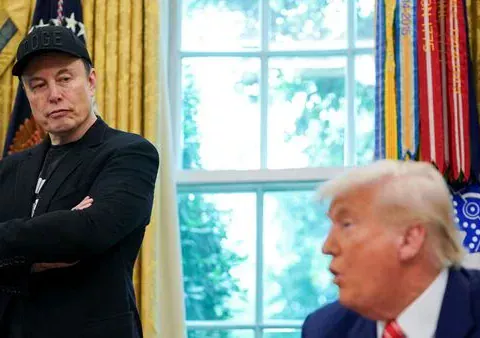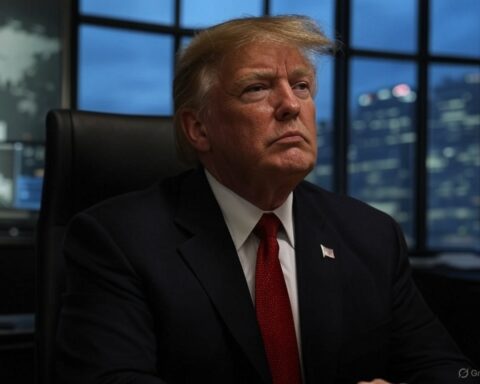A massive tariff continues to loom over some of China’s cheapest exports, from low-cost electronics to clothing, as President Donald Trump’s trade policies maintain a firm grip on U.S.-China commerce. These levies, designed to shield American industries and address security concerns, have reshaped global supply chains but come at a steep price for consumers and businesses alike.
While recent negotiations have softened some restrictions, the persistence of these tariffs underscores Trump’s commitment to economic nationalism, even as critics warn of inflation and strained international ties. This article delves into the origins, impacts, and uncertain future of a policy that continues to define U.S.-China relations.
On May 14, 2025, the U.S. announced a partial reduction in tariffs on Chinese goods, lowering rates on de minimis shipments—packages valued at $800 or less—from 120% to 54% and on commercial carrier shipments from 145% to 30%. Despite this adjustment, the tariffs remain a significant barrier to China’s low-value exports, which include everyday items like phone chargers, toys, and textiles. The policy, rooted in Trump’s campaign to reduce the U.S. trade deficit and curb alleged links to the fentanyl trade, has sparked debate over its economic wisdom and geopolitical consequences. As both nations navigate a fragile truce, the tariffs’ enduring presence raises questions about their long-term effects on American households and global markets.
The Roots of a Trade War
Trump’s tariffs, branded as a cornerstone of his “America First” agenda, emerged from a deep-seated frustration with China’s economic dominance. The U.S. trade deficit with China, which hit $440 billion in 2024, fueled Trump’s argument that cheap Chinese goods were eroding American manufacturing. The de minimis exemption, allowing duty-free entry for shipments under $800, became a lightning rod for criticism, with Trump claiming it enabled a flood of low-quality products and facilitated illicit trade. In April 2025, he eliminated this exemption for Chinese goods, imposing a 145% tariff that drastically curtailed e-commerce flows from platforms like Shein and Temu.
The tariffs also carried a national security dimension. The Biden administration had previously flagged the de minimis loophole as a conduit for fentanyl precursors, citing the difficulty of screening small packages. Trump amplified this narrative, framing the tariffs as a dual-purpose tool to protect both American jobs and public safety. However, analysts argue that the policy’s scope far exceeds its stated goals. “This isn’t just about fentanyl,” said Susan Schwab, a former U.S. trade representative, in a CNN interview. “It’s about reshaping trade to favor domestic industries, regardless of the collateral damage.”
A Massive Tariff Lingers on China’s Cheapest Exports
Even with the recent tariff reductions, China’s low-cost exports face formidable hurdles. The 54% levy on de minimis packages and 30% on commercial shipments, enacted as part of a 90-day truce, still price many Chinese goods out of the U.S. market. In April 2025, China’s exports to the U.S. dropped by 21%, with electronics, toys, and apparel hit hardest. Small businesses, particularly those reliant on cross-border e-commerce, have been squeezed, with many Chinese exporters reporting layoffs and factory closures in cities like Guangzhou and Shenzhen.
American consumers are feeling the pinch as well. The tariffs have driven up prices for budget goods, disproportionately affecting low-income households. A Reuters analysis estimated that the cost of everyday items like earbuds and children’s clothing has risen by 15-20% since the tariffs took effect. Retailers like Walmart and Target, which source heavily from China, have warned of further price hikes, while small online sellers on platforms like Etsy face shrinking profit margins. “These tariffs are a tax on the American consumer,” said economist Laura Bratton, noting that the poorest households bear the brunt.
Chinese exporters are scrambling to adapt. Some are diverting goods to markets like Southeast Asia and Latin America, while others are exploring transshipment through countries like Vietnam to bypass tariffs. These strategies, however, increase costs and complexity, undermining China’s competitive edge. “The tariff cut helps, but it’s still a death sentence for small exporters,” said Li Wei, a Shenzhen-based supplier of phone accessories, in a BBC report.
Economic Ripples and Market Uncertainty
The tariffs have reverberated across global markets, creating volatility and disrupting supply chains. When Trump announced the 145% tariff in April 2025, U.S. stocks plummeted, with tech giants like Apple, which relies on Chinese manufacturing, losing significant value. The May 12 truce announcement triggered a market rebound, with the S&P 500 gaining 3% in a single day, but analysts caution that the temporary nature of the agreement leaves investors on edge. “Markets hate uncertainty, and that’s exactly what we have,” said Dan Ives of Wedbush Securities.
The U.S. economy has shown signs of strain. The first quarter of 2025 saw GDP contract by 0.8%, partly due to businesses stockpiling goods before the tariffs hit. China’s manufacturing sector, meanwhile, contracted at its fastest rate in over a year, prompting Beijing to inject $200 billion in stimulus. Goldman Sachs projects that the 30% tariff could reduce Chinese exports to the U.S. by 35%, with ripple effects on global trade. Countries like Mexico and Canada, reliant on integrated supply chains, have also reported disruptions.
Trump, however, remains steadfast. In a Fox News interview on May 5, he claimed the tariffs were “bringing back billions” to the U.S. economy and fostering domestic investment. He pointed to $9 trillion in projected manufacturing investments, though economists question the figure’s realism. “The tariffs are a bold move, but they’re not a magic bullet,” said Mark Zandi of Moody’s Analytics, warning of inflationary pressures and job losses in import-dependent sectors.
Geopolitical Tensions and Trade Talks
The tariffs have escalated U.S.-China tensions, with Beijing retaliating through 125% tariffs on U.S. agricultural exports like soybeans and corn, which accounted for $20 billion in trade in 2024. China also imposed export controls on critical minerals and launched an antitrust probe into U.S. firms, signaling a broader economic counteroffensive. The 90-day truce has paused these measures, but Chinese officials warn of renewed action if negotiations stall.
Allies have been caught in the crossfire. Canada and Mexico, exempt from Trump’s tariffs under the U.S.M.C.A., nonetheless face supply chain challenges due to their reliance on Chinese components. India, facing its own trade deficit with China, has imposed tariffs on Chinese steel to counter “dumping,” further complicating global trade dynamics. “Trump’s tariffs are redrawing the map of international commerce,” said trade analyst Ajay Srivastava, “but they’re also alienating partners.”
Negotiations, led by Treasury Secretary Scott Bessent and Chinese Vice Premier He Lifeng, aim for de-escalation but face hurdles. Trump’s suggestion of an 80% tariff as a baseline has raised eyebrows, though he has delegated final decisions to Bessent. Beijing seeks a long-term deal to stabilize trade, but domestic pressures—China’s economic slowdown and U.S. midterm elections—complicate the process. “Both sides need a win, but trust is in short supply,” said trade expert Alexander Lamar.
The Domestic Debate
At home, the tariffs have sparked polarized reactions. Trump’s base applauds his tough stance, seeing it as a defense of American workers. However, Democrats, including Senate Majority Leader Chuck Schumer, argue that the tariffs lack legal grounding and harm consumers. Centrist Republicans, like Senator Mitt Romney, have criticized their “chaotic” implementation, calling for a more targeted approach. A Pew Research Center poll found that 60% of Americans oppose trade policies that raise prices, even if they protect jobs.
Businesses are also divided. Manufacturers like Caterpillar, which benefit from reduced Chinese competition, support the tariffs, while retailers and tech firms decry their costs. The National Retail Federation estimates that the tariffs could cost U.S. consumers $78 billion annually. Small businesses, particularly those reliant on e-commerce, face existential threats, with some Etsy sellers reporting a 50% drop in sales.
A High-Stakes Gamble
As the 90-day truce unfolds, the future of Trump’s tariffs remains uncertain. Supporters view them as a lever to force concessions from China, such as increased U.S. exports or stricter fentanyl controls. Critics, however, warn of entrenched inflation and supply chain chaos that could undermine Trump’s economic goals. The tariffs’ persistence on China’s cheapest exports ensures ongoing pressure on both economies, with American consumers and Chinese workers paying the immediate price.
Whether the tariffs will deliver Trump’s vision of a revitalized American industry or merely deepen economic divides is unclear. For now, they stand as a testament to his willingness to wield trade as a weapon, reshaping U.S.-China relations in ways that will reverberate for years.
Focus Keywords: Trump tariffs China, China low-cost exports, de minimis tariff, U.S.-China trade tensions, tariff consumer prices, Trump economic policy, China export decline, trade war impacts

















